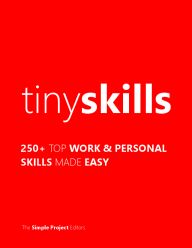A well-structured content creation workflow ensures that content is planned, created, reviewed, and published efficiently while maintaining high quality and consistency. Whether you're producing blogs, videos, social media posts, or newsletters, this workflow can be customized to fit your content goals and team structure.
1. Purpose of the Content Creation Workflow
The purpose of this workflow is to:
- Streamline the process of ideation, creation, review, and publishing.
- Ensure consistency in tone, quality, and style across all content.
- Reduce bottlenecks by clearly defining roles, tasks, and timelines.
2. Content Creation Workflow Stages
Stage 1: Ideation and Planning
- Goal: Generate content ideas and align them with the overall strategy.
- Tasks:
- Brainstorm content ideas (e.g., team brainstorming sessions).
- Research trending topics, keywords, and audience interests.
- Create a content calendar to schedule topics by date and platform.
| Responsible Roles | Content Strategist, Marketing Team, SEO Specialist |
| Tools | Trello, Asana, BuzzSumo, Google Trends |
| Deliverable | Approved content ideas and a scheduled content calendar. |
Stage 2: Outline Creation
- Goal: Draft a clear structure for the content piece.
- Tasks:
- Write a detailed outline, including key points, subheadings, and messaging goals.
- Ensure the outline aligns with SEO objectives (e.g., keywords, meta description ideas).
- Submit the outline for approval by a content manager or editor.
| Responsible Roles | Content Writer, SEO Specialist |
| Tools | Google Docs, Notion, Grammarly |
| Deliverable | Approved content outline. |
Stage 3: Content Creation (Drafting)
- Goal: Create the first draft of the content based on the approved outline.
- Tasks:
- Write the initial draft of the content piece (e.g., blog, video script, infographic text).
- Ensure the content follows the brand voice, style guide, and SEO requirements.
- Include visuals or multimedia elements (e.g., images, charts, videos) as needed.
| Responsible Roles | Content Writer, Graphic Designer (if visuals are needed) |
| Tools | Canva, Adobe Creative Suite, Google Docs, Grammarly |
| Deliverable | First draft of the content. |
Stage 4: Editing and Review
- Goal: Polish and refine the content to ensure it meets quality standards.
- Tasks:
- Editor reviews the draft for grammar, clarity, tone, and style.
- Ensure the content is fact-checked and aligns with brand guidelines.
- Make revisions based on editor feedback.
| Responsible Roles | Editor, Content Manager |
| Tools | Grammarly, Hemingway App, Google Docs, Style Guide |
| Deliverable | Finalized content draft approved for publishing. |
Stage 5: SEO Optimization
- Goal: Ensure the content is optimized for search engines.
- Tasks:
- Optimize meta title, meta description, and headers (H1, H2, H3).
- Add internal and external links to the content.
- Ensure proper image alt-text and compressed file sizes for fast loading.
| Responsible Roles | SEO Specialist, Content Writer (for revisions) |
| Tools | Yoast SEO (WordPress), SEMrush, Ahrefs, Screaming Frog |
| Deliverable | SEO-optimized content ready for publishing. |
Stage 6: Approval
- Goal: Get final approval for the content from key stakeholders.
- Tasks:
- Submit the content for review to key stakeholders (e.g., marketing lead, client).
- Address any feedback or last-minute changes.
- Obtain final approval for publishing.
| Responsible Roles | Content Manager, Marketing Lead |
| Tools | Google Docs, Notion |
| Deliverable | Approved content for publishing. |
Stage 7: Publishing
- Goal: Publish the finalized content across the appropriate platforms.
- Tasks:
- Upload the content to the appropriate platform (e.g., WordPress, social media).
- Format the content for readability (e.g., bullet points, short paragraphs).
- Add visuals and schedule the content for publication.
| Responsible Roles | Content Manager, Social Media Manager |
| Tools | CMS (WordPress, HubSpot), Hootsuite, Buffer |
| Deliverable | Published content. |
Stage 8: Promotion and Distribution
- Goal: Maximize the reach and engagement of the published content.
- Tasks:
- Share content on social media platforms (e.g., LinkedIn, Twitter).
- Email the content to your subscriber list.
- Collaborate with influencers or partners to amplify distribution.
| Responsible Roles | Social Media Manager, Marketing Team |
| Tools | Buffer, Hootsuite, Mailchimp |
| Deliverable | Promoted and distributed content. |
Stage 9: Performance Analysis
- Goal: Track and measure the success of the content.
- Tasks:
- Analyze key performance metrics (e.g., page views, engagement, conversions).
- Identify what worked and areas for improvement.
- Document lessons learned for future content creation efforts.
| Responsible Roles | Analytics Specialist, Marketing Lead |
| Tools | Google Analytics, SEMrush, HubSpot, Social Media Insights |
| Deliverable | Performance report with actionable insights. |
3. Visual Workflow Diagram Example
Here's a simplified content creation workflow diagram:
1 Brainstorm Ideas
2 Create Outline
3 Write Draft
4 Edit and Review
5 SEO Optimization
6 Approval
7 Publish Content
8 Promote and Distribute
9 Track and Analyze Performance
4. Tools for Content Creation Workflow
Planning and Collaboration
- Trello or Asana: Organize tasks and track progress.
- Google Calendar: Plan content deadlines and schedules.
Content Writing and Editing
- Grammarly: For grammar and tone checks.
- Hemingway App: Improve readability and simplify content.
SEO Tools
- Yoast SEO: Optimize content for WordPress.
- SEMrush or Ahrefs: Research keywords and track SEO performance.
Publishing Tools
- WordPress: For blog publishing.
- Hootsuite or Buffer: For scheduling and distributing social media posts.
Analytics
- Google Analytics: Measure page views, engagement, and conversions.
- Social Media Insights: Track shares, comments, and likes on platforms.
5. Metrics to Measure Content Workflow Success
- Content Quality: Fewer revisions needed during editing.
- Content Performance: Track page views, time on page, and bounce rate.
- Timeliness: Percentage of content delivered on time.
- Engagement: Social shares, comments, and audience interaction.
- Conversions: Leads or sales generated by the content.
6. Best Practices for Content Workflows
- Document Your Workflow: Ensure all team members know each step.
- Set Realistic Deadlines: Avoid rushed content that sacrifices quality.
- Create Templates: Use templates for outlines, drafts, and review processes.
- Encourage Feedback: Foster open communication between writers, editors, and stakeholders.
- Automate Tasks: Use tools like Zapier or Hootsuite to streamline repetitive tasks.
Next: Read 2500+ consumer guides to shopping, electronics, appliances, home services, cars, money and more.

